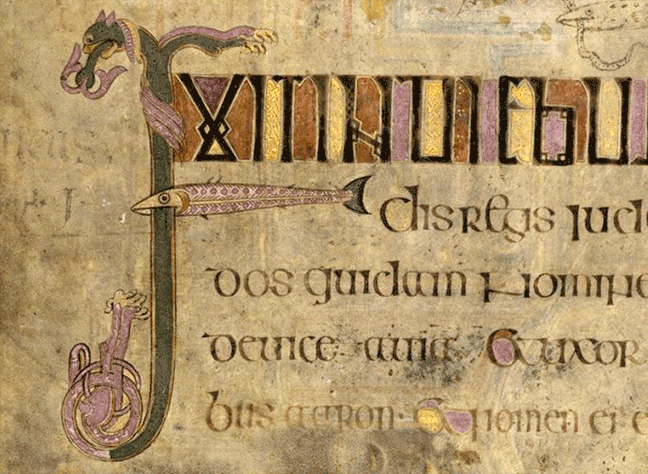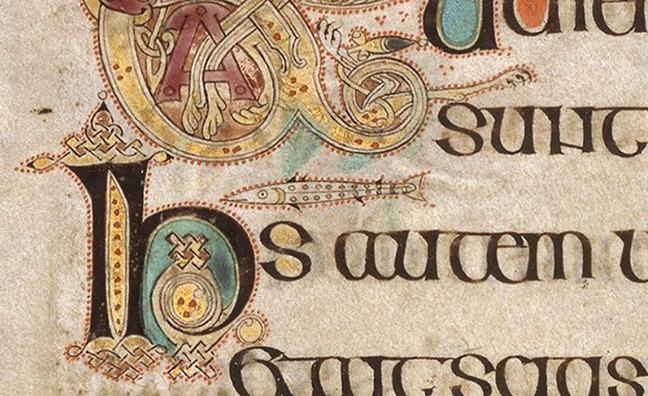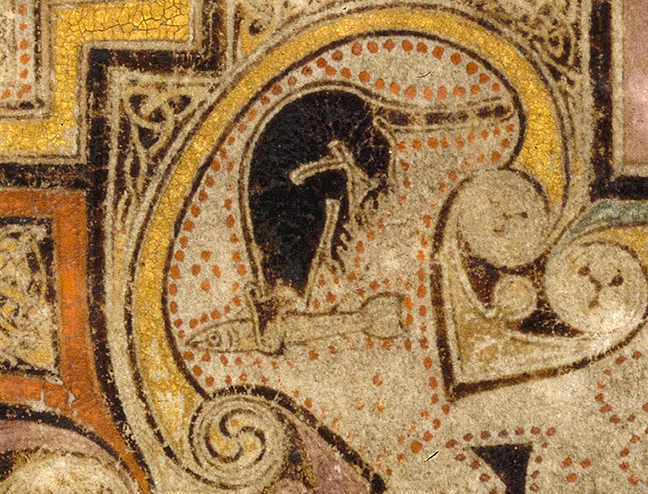Home / History / Irish History / The Book of Kells: Exploring an Irish Medieval Masterpiece / Fish in the Book of Kells
This article is from the free online
The Book of Kells: Exploring an Irish Medieval Masterpiece


Reach your personal and professional goals
Unlock access to hundreds of expert online courses and degrees from top universities and educators to gain accredited qualifications and professional CV-building certificates.
Join over 18 million learners to launch, switch or build upon your career, all at your own pace, across a wide range of topic areas.

 Fig 1. A fish forms the cross bar of the letter F for Fuit
Fig 1. A fish forms the cross bar of the letter F for Fuit  Fig 2. The abbreviation of a word was signalled by a straight line above it. On
Fig 2. The abbreviation of a word was signalled by a straight line above it. On  Fig 3. An otter consuming a fish on
Fig 3. An otter consuming a fish on 





